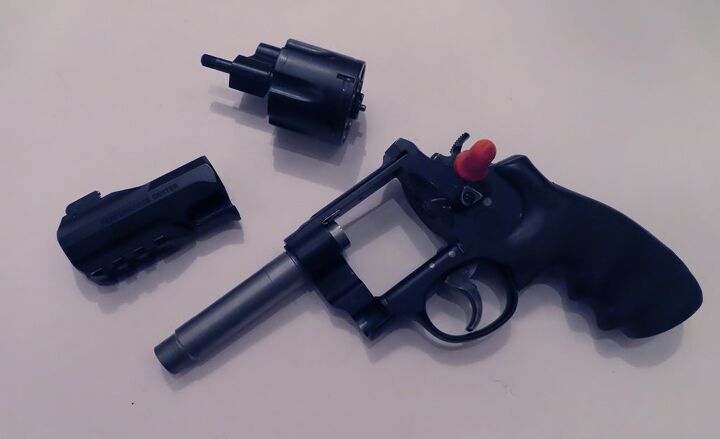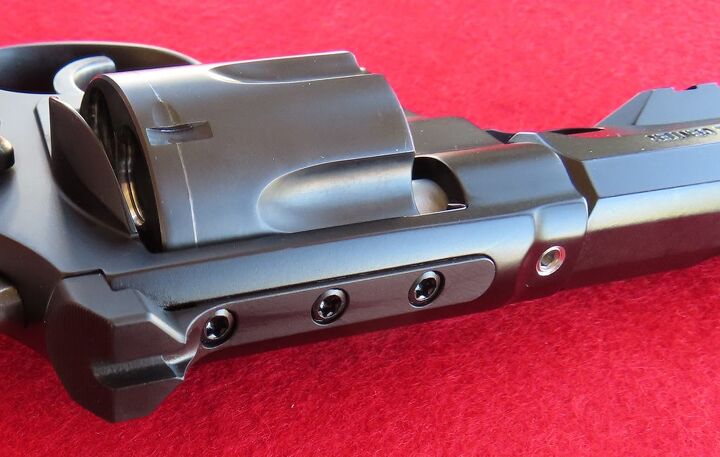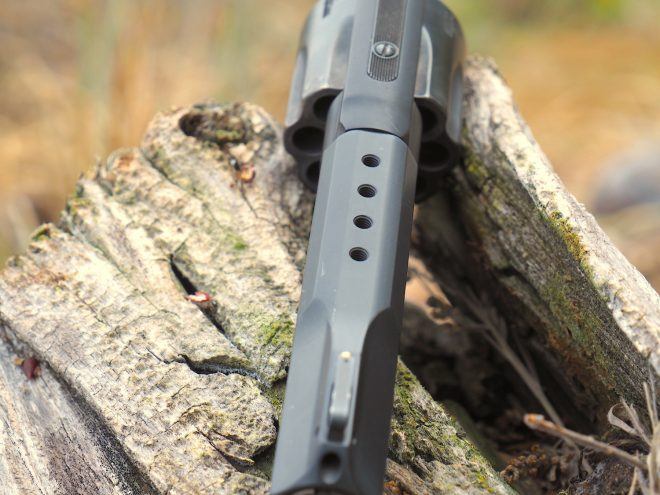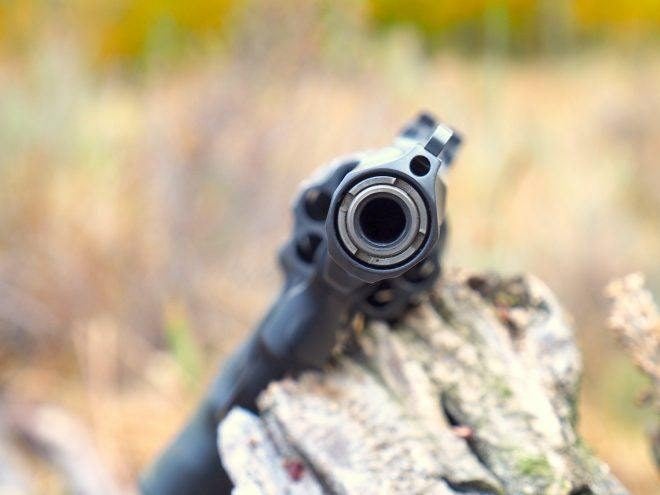Welcome to another edition of TFB’s Wheelgun Wednesday, where we discuss all topics revolving around revolvers. Today’s topic comes from gunsmith Dave Lauck, of D&L Sports, in which he addresses one of the main detractors of the design of two-piece barrels for modern revolvers, which is that they can loosen under recoil over time. The most prominent examples of two-piece barrels comes from the popular Smith & Wesson scandium framed Model 300 series, such as the 325, 327 (aka TRR8 and R8), and 329. While there’s no certainty that each revolver with a two-piece barrel will loosen, people have reported this problem, which can lead to less than optimal conditions for accuracy and safety, so let’s take a look at Mr. Lauck’s solution to loose two-piece barrels.
Wheelgun Wednesdays @ TFB
- S&W TRR8 Review
- Taurus Raging Hunter 460 Review
- Custom Revolver Work & Sights From Dave Lauck At D&L Sports
- Looking Forward To The Next Top Break Revolver
- New .500 Bushwhacker Cartridge for BFR Revolvers by TII Armory
THE PROBLEM OF TWO-PIECE BARRELS, AND A SOLUTION

Another example of a two-piece revolver barrel, the Taurus Raging Hunter. Image from TFB’s Adam S’s review.
For those that are new to the concept of two-piece barrels, the steel, rifled barrel that interacts with the bullet is covered by a barrel shroud that incorporates the sights and rail systems for optics and weapon lights, if so endowed. The main advantage of this two-piece barrel system is weight savings, which is why Smith & Wesson utilize it on their lightweight scandium frames, thus a minimal amount of heavier steel is used for the overall design while keeping the aesthetics and features appealing. As a side note, I’ve always loved the look of S&W’s 300 series revolvers. The second advantage of two-piece barrels is that the rifled barrel could be replaced if the owner shot it so much that the rifling begins to disappear, however, I’m guessing that aspect is rarely required with the exception of a few competition shooters.
Dave Lauck provided TFB his description of the two-piece barrel problem, and his resultant solution:
Multi piece revolver barrels can provide a weight savings by using various materials. Many shooters want to reduce weight on a carry gun. However, experience has shown that these barrel assemblies frequently come loose. Another problem is that it takes specialized tooling to correct the problem. At DLS inc the goal is to solve problems with design improvements so they don’t occur in the field. The loose barrel problem can be solved with proper fitting and installing a barrel lock. While this custom work is being done, the barrel can also be given a precision, recessed and protected target crown, instead of the difficult to clean step crown. In addition, while the barrel is out of the frame the forcing cone can be properly cut and polished for best performance.

An image of the separated two-piece barrel system from the S&W 325. Image credit: DLSports.com
As you can see in the photo below, Mr. Lauck’s barrel lock is installed just aft of the barrel shroud on the top of the frame. The barrel lock is essentially a set screw that keeps the barrel from turning under recoil. The photo that follows is of TFB’s Rusty S’s S&W TRR8 in its factory condition without a barrel lock.

Image Credit: DLSports.com

Rusty’s S&W TRR8 without a barrel lock. Image credit: Rusty S.
Mr. Lauck also addressed another potential design issue with a feature also seen on the above-listed revolvers, as well as on some Ruger GP100 and Redhawk series of revolvers, the spring-loaded front sights. He describes the issue and his solution below:
Another problem that arises too often with spring loaded interchangeable front sights is they get caught on the top lip of the holster while re-holstering. When the revolver is pushed into the holster the front sight becomes unlatched from the retaining pin. Then when the revolver is drawn again, the front sight falls out of the gun during the draw stroke, and is often lost under field conditions. This is another concerning problem that should be prevented before it occurs. Once the correct front sight is selected to achieve proper zero on target, then the front sight should receive an additional cross pin to rigidly secure it in place, even during rough use. The sharp, fragile and shallow notch rear sight can be replaced with a DLS inc heavy duty rear sight to solve those problems.
 Your Privacy Choices
Your Privacy Choices
